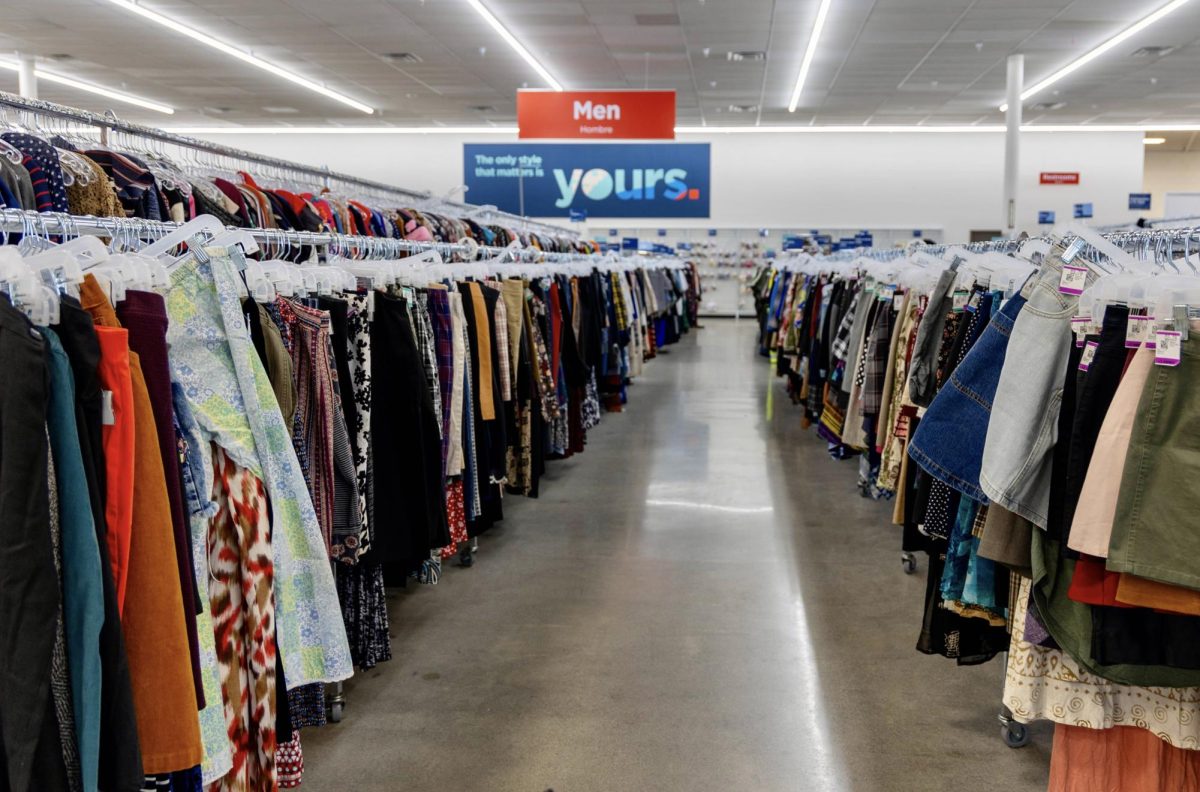Thrift stores had become a popular place for Bay Area teenagers to shop for affordable and stylish clothes. Shopping second hand gives many a place to buy clothing without the expensive retail prices. The new attention brought by social media, however, has changed the culture of thrifting.
SCHS students have found that thrift stores often provide greater access to unique styles. Junior Link Coniconde favors Salvation Army and Goodwill to look for his alternative style of clothing at cheaper prices. He explained how there are more benefits to buying second hand rather than buying new clothes.
“You can get a lot more interesting pieces, again, better for the environment,” Coniconde said. “I usually dress pretty eccentrically, and a lot of first-hand stores are way more expensive.”
Sophomore Siena Zylstra agrees that thrift stores give buyers a place to find something new, styles they have never worn or seen. She usually looks out for streetwear. Zylstra thinks thrifting allows for people to piece different clothing together to form their own original, unique style.
“You get clothes from people of different cultures, or from a long time ago like the ‘90s,” Zylstra said. “You get to incorporate all of those cultures from back then to now, so whatever style you want, you can create your own.”
Fast fashion has increased in popularity in recent years with new trends constantly popping up on social media. The New York Times’ “How Fast Fashion Became Faster – and Worse for the Earth” explains how poorly-produced items are mass consumed and make up 35% of landfill and ocean microplastics. Coniconde noticed how many fast-fashion pieces eventually end up being tossed.
“There’s too many clothes on the planet that are made with such bad material,” Coniconde said. “If we just keep reusing clothes that are perfectly good, why not?”
Despite the abundance of fast fashion flowing into thrift stores, students are still able to find plenty of quality clothing. Many, however, worry that the rising popularity of thrift stores affects those who rely on them for affordable clothing. Those wanting to shop with a limited budget could be impacted by the increasing demand as it changes the variety of clothing and prices found in thrift stores.
Students have seen an increase in prices at thrift stores and many blame it on clothing resellers. Depop, a reselling app, forces thrift stores to up their prices to keep up with the demand of people buying trendy clothes at a low price, then reselling them for profit.
“Usually thrifting is for people that can’t afford high-quality clothes, so with more people with the money going thrifting, there might not be enough clothes for people that don’t have the money to buy,” Zylstra said.
Junior Ember Dumont had similar experiences with more expensive thrift prices, which he believes to be a result of social media promoting thrifting. More people trying to find quality items at affordable prices has also increased the need for more clothes to be donated.
Students agree that thrift stores have changed in recent years. Whether it is more people shopping or rising prices, a place once known for unwanted clothing has transformed into a popular area for teenagers to hangout and find affordable clothes. Many focus on the benefits of thrifting: helping the environment, cheaper clothes and overall memories.
“Normally, it was kind of negative whenever I mentioned that I got it from a thrift store, but now it’s kind of like an accomplishment or a good thing,” Dumont said. “I’m very happy that thrift stores are getting popular because it’s able to reduce the waste in a lot of landfills.”


